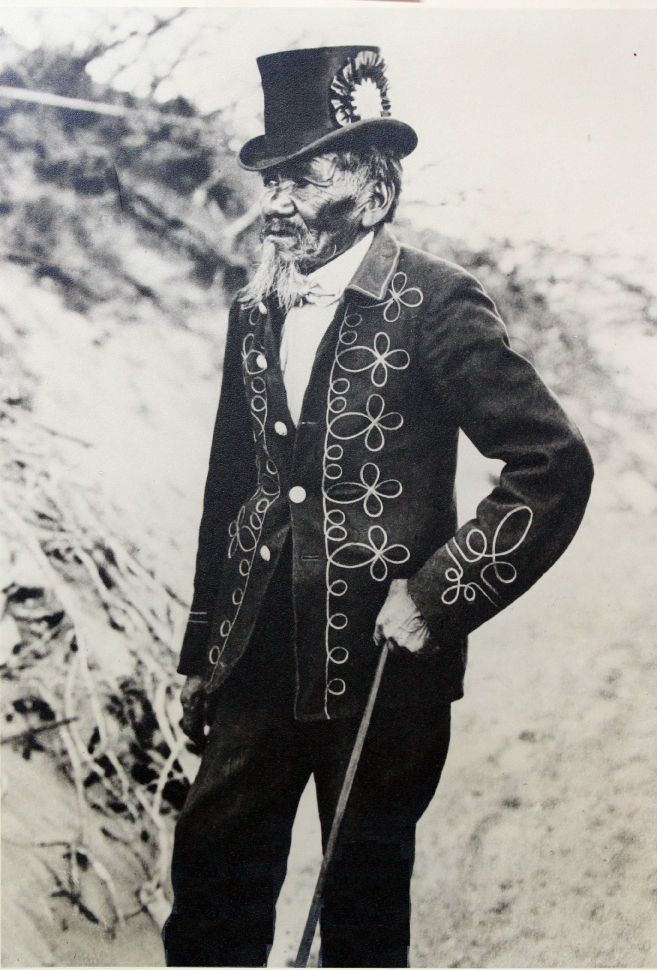Christopher Houston Carson (December 24, 1809 – May 23, 1868), also known as “Kit” Carson, was a nineteenth century American Frontiersman, Army Officer and Politician and the namesake of Carson City, Nevada. During his lifetime, he achieved notoriety for his exploits as an Indian Fighter, Fur Tapper, Mountain man

Carson was born on December 24, 1809 in Madison County, Kentucky to Lindsey Carson and Rebecca Robinson Carson. He is a cousin to Danial Boone on his mothers’ side. The family moved to Missouri two years later. Survival being the priority, Carson never learned to read or write. At the age of 16, he signed up with a large caravan of merchants headed west towards Santa Fe.
Exploration
In 1854, a change encounter with the explorer John C. Frémont, made Carson an active participant in the clash of empires that eventually extended the boundaries of the continental United States to its present. The two men met aboard a steamboat on the Missouri River. He served as a guide to for Fremont on three expeditions for a sum of $100 per month. These expeditions found the Oregon Trail and opened to west for the settlers who followed.
First expedition, 1842
In 1842, during the first expedition, Carson guided Frémont across the Oregon Trail to South Pass, Wyoming. The purpose of this expedition was to map and describe the Oregon Trail as far as South Pass. It is during this trip, that the two men produced a guidebook, maps, and other paraphernalia would be printed for westward-bound migrants and settlers. After the completion of the five-month expedition, Frémont wrote his government reports, which made Carson’s name known across the United States, and spurred a migration of settlers westward to Oregon via the Oregon Trail.
Second expedition, 1843
In 1843, Carson agreed to join Frémont’s again during his second expedition into the west. Carson guided Frémont across part of the Oregon Trail to the Columbia River in Oregon. The purpose of the expedition was to map and describe the Oregon Trail from South Pass, Wyoming, to the Columbia River. They also ventrured towards the Great Salt Lake in Utah, using a rubber raft to navigate the waters.
On the way to California, the party is held up during bad weather in the Sierra Nevada Mountains. Fortunately, Carson’s good judgement and his skills as a guide and they found some American settlers who fed them. The expedition turned towards California. This ventures is illegal, at the time, and dangerous because California was Mexican territory.
During the expedition, the expedition arrive in the Mojave Desert. His party met a Mexican man and boy, who informed Carson that Native Americans had ambushed their party. The Native Americans killed the men, and the women are staked to the ground, sexually mutilated, and killed. The murderers then stole the Mexicans’ 30 horses. Carson and a mountain man friend, Alexis Godey, went after the murderers. It took the two men, two days to find the culprits. The pair rushed into their camp and killed and scalped two of the murderers. The horses were recovered and returned to the Mexican man and boy. This act brought Carson even greater reputation and confirmed his status as a western hero in the eyes of the American people.
The Mexican government ordered Frémont to leave. Frémont returned to Washington, DC and filed his reports. He but did not mention the California trip. The government liked his reports but ignored his illegal trip into Mexico. Frémont was made a captain. The newspapers nicknamed Fremont, “The Pathfinder.”
Third expedition, 1845
In 1845, Carson lead Frémont on a third expedition. Leaving Westport Landing, Missouri, they crossed the Rockies, passed the Great Salt Lake, and down the Humboldt River to the Sierra Nevada of California and Oregon. The third expedition is more political in nature. Frémont may have been working under secret government orders. US President Polk wanted Alta California, which includes parts of California, Arizona, Nevada, Utah and parts of Wyoming.
Once in California, Frémont set out to rouse American settlers into a patriotic fervor. The Mexican General Jose Castro at Monterey ordered him to leave. On Gavilan Mountain, Frémont erected a makeshift fort and raised the American Flag in defiance to these orders. While in Oregon, while camped near Klamath Lake, a messenger from Washington, DC, caught up with Fremont and made it clear that Polk wanted California.
On 30 March 1846, while traveling north along the Sacramento Valley, Fremont’s expedition met a group of Americans Settlers. The settlers claimed that a band of Native Americans was planning to attack them. Frémont’s party set about searching for Native Americans. On April 5 1846, Frémont’s party spotted a Wintu village and launched a vicious attack, which resulted in the deaths of approximately 120 to 300 men, women, and children and the displacement of many more. This act of savagery became known as the Sacramento River massacre. Carson, later stated that “It was a perfect butchery.
Army
Kit Carson accepted a commission as a colonel in the U.S. Army in 1861, Carson fought against Native American and Confederate forces in several actions.
His fame was then at its height,… and I was very anxious to see a man who had achieved such feats of daring among the wild animals of the Rocky Mountains, and still wilder Indians of the plains…. I cannot express my surprise at beholding such a small, stoop-shouldered man, with reddish hair, freckled face, soft blue eyes, and nothing to indicate extraordinary courage or daring. He spoke but little and answered questions in monosyllables.
Northern Civil War General William Tecumseh Sherman


















